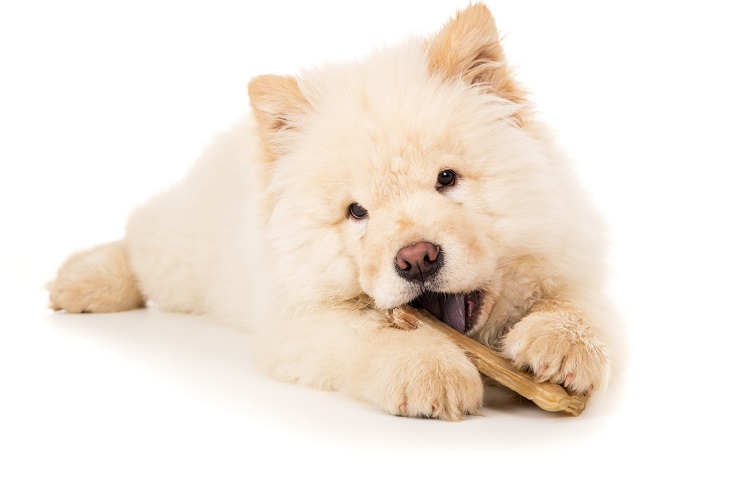
Does your dog suffer from bad breath? Do its teeth look dirty or gums swollen? If you have answered yes to any of these questions, it’s time you paid attention to your four-legged friend’s dental health.
According to the American Veterinary Dental College, periodontal disease is the most common condition in adult dogs. In fact, by the age of three, most dogs have some evidence of periodontal disease. Other than swollen gums and bad breath, other signs of dental disease include yellow-brown tartar, trouble chewing, excessive drooling, or a sudden change in eating habits.
As your little friend cannot tell you when he has a toothache or dental issues, it’s vital that you take steps to keep his teeth clean. At the same time, keeping a close eye on your pet’s teeth will enable you to catch problems earlier, meaning better treatment. Untreated dental issues in dogs can lead to tooth loss, painful abscesses, and systemic infections throughout your dog’s body.
Below are some useful tips for taking care of your dog’s teeth:

You should take the time to brush your pet’s teeth 2-3 times a week. Just like us humans, dogs need proper brushing in order to keep their teeth clean.
To do this, you’ll need a soft-bristled toothbrush specifically designed for pets and toothpaste that has been specifically formulated for pets. Then, follow these steps:
1. Place a small blob of toothpaste on the toothbrush.
2. Hold it at a 45-degree angle to the tooth surface with the bristles pointing towards the gums.
3. Brush using circular motions, concentrating on the gum line, the outside surfaces of the teeth, and the back of the teeth.
When brushing your dog’s teeth, you’ll need to be patient as most dogs don’t enjoy having their mouths touched. You could always ask your vet to show you how it’s done.
Canine dental wipes are a great alternative to a toothbrush and they are especially beneficial for pets who cannot tolerate brushing.
These wipes are soft, disposable, and have been designed to clean your dog’s teeth and gums gently. Furthermore, they come in different flavors, so you can choose the ones your dog loves the most. However, one drawback of these wipes is that they cannot reach the nooks and crannies that a brush can.

There are many chews on the market that are designed to help keep your dog’s teeth cleaner. These treats help to control plaque and tartar buildup on your dog’s teeth. When your pet starts to gnaw on the chew treat, it massages the gums and scrapes away soft tartar.
To add to this, they help to satisfy your dog’s natural desire to chomp, strengthens his teeth, and decrease his stress levels.
Chewing on raw bones also helps to keep your dog’s teeth healthy and strong. If giving raw bones on a daily basis is not possible, then try synthetic bones that have been specifically designed to strengthen your dog’s gums and teeth.
When out shopping, keep an eye out for natural choices like rawhide or knucklebone. These are softer bones and are gentler on your pet’s teeth. Never give your dog hard synthetic bones as they can fracture teeth or damage gums.
5. Remove Food Particles
When your dog has finished eating, have a good look inside its mouth. If you notice food particles, simply remove them.
This is vital as food particles that are not removed will mix with saliva and bacteria to form plaque. Within a couple of days, the plaque calcifies and hardens into tartar, which means more plaque buildup. This can ultimately result in gingivitis.

Offering your canine friend specially formulated dry or crunchy food can slow down the formation of plaque and tartar. Soft food often sticks to the teeth and causes plaque and decay. Furthermore, crunchy foods such as carrots are good for your dog’s teeth.
You also need to make sure that your pet is drinking enough water. Water helps to wash away any food particles stuck between the teeth and also helps fight bad breath.
As a responsible pet owner, you need to keep a close eye on your pet’s oral health.
For example, do a breath test once a month. Simply sniff your dog’s breath, and if you find the smell to be offensive and it's accompanied by a loss of appetite, vomiting, or excessive drinking or urinating, make an appointment with your vet.
Another thing you can do is check your pet’s lips. Once a week, lift your dog’s lips and carefully examine the teeth and gums. The gums should be pink, and there should be no signs of swelling. The teeth should look clean without any brownish tartar. If there is swelling or redness around the gums or the teeth have a brown tinge to them, it’s time to visit the vet.
Every so often you should take your dog to see a veterinary dentist. A professional cleaning and regular checkup will help to maintain oral hygiene and allow a timely diagnosis of any oral issues.
A thorough cleaning of the teeth and gums requires anesthesia, but a professional cleaning is the best way to maintain your dog’s oral hygiene. On average, dogs should get a dental cleaning once a year starting at the age of 3.
Source: top10homeremedies
Images: depositphotos